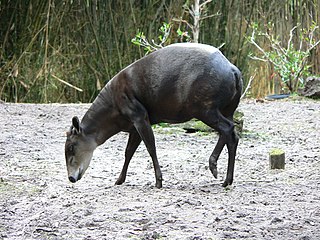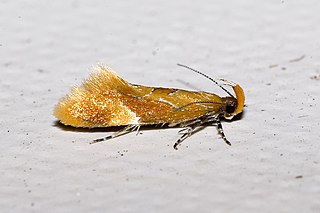
A smiley, sometimes called a smiley face, is a basic ideogram representing a smiling face. Since the 1950s, it has become part of popular culture worldwide, used either as a standalone ideogram or as a form of communication, such as emoticons. The smiley began as two dots and a line representing eyes and a mouth. More elaborate designs in the 1950s emerged, with noses, eyebrows, and outlines. New York radio station WMCA used a yellow and black design for its "Good Guys" campaign in the early 1960s. More yellow-and-black designs appeared in the 1960s and 1970s, including works by Franklin Loufrani in 1971 and Harvey Ross Ball in 1963. Today, The Smiley Company claims to hold the rights to the smiley face in over 100 countries. It has become one of the top 100 licensing companies globally.

Yellow is the color between green and orange on the spectrum of light. It is evoked by light with a dominant wavelength of roughly 575–585 nm. It is a primary color in subtractive color systems, used in painting or color printing. In the RGB color model, used to create colors on television and computer screens, yellow is a secondary color made by combining red and green at equal intensity. Carotenoids give the characteristic yellow color to autumn leaves, corn, canaries, daffodils, and lemons, as well as egg yolks, buttercups, and bananas. They absorb light energy and protect plants from photo damage in some cases. Sunlight has a slight yellowish hue when the Sun is near the horizon, due to atmospheric scattering of shorter wavelengths.

The yellow-billed magpie(Pica nuttalli), also known as the California magpie, is a large corvid that inhabits California's Central Valley and the adjacent chaparral foothills and mountains. Apart from its having a yellow bill and a yellow streak around the eye, it is virtually identical to the black-billed magpie (Pica hudsonia) found in much of the rest of North America. The scientific name commemorates the English naturalist Thomas Nuttall.

The yellow-crowned night heron, is one of two species of night heron in genus Nyctanassa. Unlike the black-crowned night heron, which has a worldwide distribution, the yellow-crowned is restricted to the Americas. It is known as the bihoreau violacé in French and the pedrete corona clara or yaboa común in some Spanish-speaking countries.

The yellow-eyed penguin, known also as hoiho, is a species of penguin endemic to New Zealand.

The yellow perch, commonly referred to as perch, striped perch or preacher is a freshwater perciform fish native to much of North America. The yellow perch was described in 1814 by Samuel Latham Mitchill from New York. It is closely related, and morphologically similar to the European perch ; and is sometimes considered a subspecies of its European counterpart.

The yellow-necked mouse, also called yellow-necked field mouse, yellow-necked wood mouse, and South China field mouse, is closely related to the wood mouse, with which it was long confused. It was only recognised as a separate species in 1894. It differs in its band of yellow fur around the neck and in having slightly larger ears and usually being slightly larger overall. Around 100 mm in length, it can climb trees and sometimes overwinters in houses. It is found mostly in mountainous areas of southern Europe, but extends north into parts of Scandinavia and Britain. It facilitates the spread of tick-borne encephalitis to humans and is a reservoir species for the Dobrava virus, a hantavirus that is responsible for causing haemorrhagic fever with renal syndrome.

The yellow-footed antechinus, also known as the mardo, is a shrew-like marsupial found in Australia. One notable feature of the species is its sexual behavior. The male yellow-footed antechinus engages in such frenzied mating that its immune system becomes compromised, resulting in stress related death before it is one year old.

The yellow-backed duiker is a shy, forest-dwelling antelope of the order Artiodactyla, from the family Bovidae. Yellow-backed duikers are the most widely-distributed of all duikers. They are found mainly in Central and Western Africa, ranging from Senegal and Gambia on the western coast, through to the Democratic Republic of the Congo to western Uganda; their distribution continues southward into Rwanda, Burundi, and most of Zambia.

Vasant Panchami, also rendered Vasanta Panchami and Saraswati Puja in honour of the Hindu goddess Saraswati, is a festival that marks the preparation for the arrival of spring. The festival is celebrated in Indian religions in different ways depending on the region. Vasant Panchami also marks the start of preparation for Holika and Holi, which take place forty days later. The Vasant Utsava (festival) on Panchami is celebrated forty days before spring, because any season's transition period is 40 days, and after that, the season comes into full bloom.

Genoways's yellow bat is a species of vesper bat found only in Mexico. It is threatened by habitat loss. Due to its imperiled status, it is identified by the Alliance for Zero Extinction as a species in danger of imminent extinction.

The lesser Asiatic yellow bat is a species of vesper bat. It is found in Bangladesh, Cambodia, India, Indonesia, Malaysia, Pakistan, the Philippines, Sri Lanka, and Taiwan.

The satinbirds or cnemophilines, are a family, Cnemophilidae of passerine birds which consists of four species found in the mountain forests of New Guinea. They were originally thought to be part of the birds-of-paradise family Paradisaeidae until genetic research suggested that the birds are not closely related to birds-of-paradise at all and are perhaps closer to berry peckers and longbills (Melanocharitidae). The current evidence suggests that their closest relatives may be the cuckoo-shrikes (Campephagidae).

Nasi kuning, or sometimes called nasi kunyit, is an Indonesian fragrant rice dish cooked with coconut milk and turmeric, hence the name nasi kuning.

Epicallima formosella is a species of gelechioid moth. It belongs to subfamily Oecophorinae of the concealer moth family (Oecophoridae).
The Republic of Senegal awards the following orders, decorations and medals.

Yellow House is a village in eastern Berks County, Pennsylvania, United States, situated at the junction of Routes 562 and 662. It is located in Amity Township and Oley Township. It is drained by the Manatawny Creek into the Schuylkill River. It is split between the Douglassville and Oley post offices, which use the ZIP codes of 19518 and 19547, respectively.

Husson's yellow bat is a species of vesper bat found in Suriname and southern Brazil.

Epicallima argenticinctella, the orange-headed epicallima moth, is a moth of the family Oecophoridae. It is found in North America, where it has been recorded from Nova Scotia to South Carolina, west to Kansas and Texas. The habitat consists of deciduous forests.

Epicallima is a genus of concealer moths in the family Oecophoridae. The genus was erected by Harrison Gray Dyar Jr. in 1903. There are about seven described species in Epicallima, found primarily in North America and Europe.




















